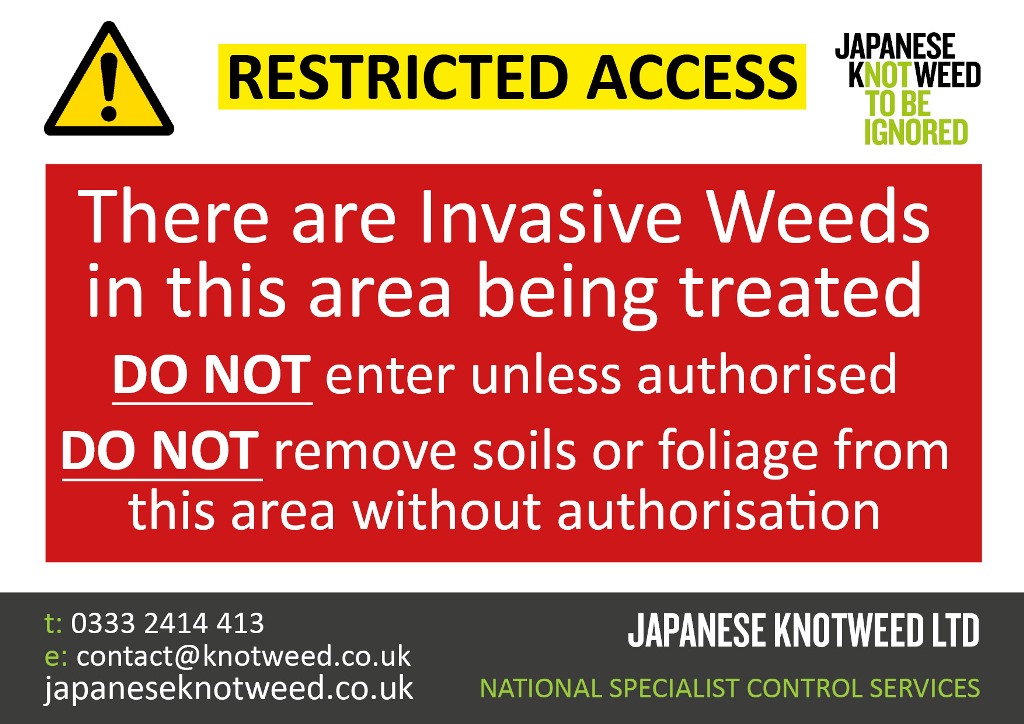How to stop Japanese knotweed from taking over your construction site!

Japanese knotweed is a highly invasive plant species that can cause considerable damage to construction sites. It has a strong root system that can penetrate through concrete and asphalt, causing costly damage to buildings and infrastructure. For this and many other reasons knotweed is a commercial or residential developer’s nightmare!
WHAT HAPPENS IF KNOTWEED IS FOUND ON SITE?
If knotweed is identified on any construction site, all work must be immediately stopped whilst a survey is carried out and a treatment or eradication programme has been put in place. It is also important to officially note the exact location of the knotweed in the Operation Manual, for future reference and/or land sales.
STEP 1: IDENTIFICATION
The first step in managing Japanese knotweed on a construction site is to identify it. This plant has distinctive shovel-shaped leaves and hollow stems with purple speckles. It typically grows in dense clumps and can reach heights of up to 10 feet. It’s important to get a professional survey carried out as Japanese knotweed has several ‘lookalike’ species which can easily fool the untrained eye.

STEP 2: PUT THE PROJECT ON HOLD
If Japanese knotweed is present on a construction site, it is important to take immediate action to prevent it from spreading. This means all activities on site need to be stopped, the site will require signage and fencing to be erected around it to warn of the presence of knotweed, and basically the project will be on hold. This is vital to ensure the knotweed is contained and not allowed to spread via clothing, equipment or vehicles.

STEP 3: TREATMENT OR EXCAVATION?
The most effective methods for controlling this plant are planned and controlled herbicide treatments, and/or excavation.
Japanese knotweed excavation involves digging up its roots – every last tiny particle must be extracted, making this a challenging and labour-intensive process, as the roots (rhizomes) can grow deep and spread horizontally over a large area.
It is important to carefully plan the excavation process to ensure that all the roots are removed, as even a small piece of root left in the ground can regenerate into a new plant. Excavation should only be done by a licensed professional who has the necessary training and equipment.
Herbicide treatment is not often chosen for construction sites as this is a long-term option, but should this be a viable solution, before applying herbicides, it is important to carefully plan the treatment area to ensure that the chemicals do not come into contact with any nearby bodies of water or areas of biodiversity protection (such as protected species). A five or 10-year treatment plan may be necessary to achieve complete control over several visits.

STOPPING THE SPREAD
In addition to excavation and herbicide treatment, it is important to implement preventative measures to stop the spread of Japanese knotweed. This can include installing barriers around the construction site to prevent the plant from spreading, as well as regularly inspecting the site for any new growth.
CONTROLLED WASTE REMOVAL
It is also important to dispose of any Japanese knotweed plant material properly and in accordance with legislation on waste removal. Therefore, it is vital that Japanese knotweed be removed only by a licensed professional holding a Waste Carrier’s Licence. Attempting to remove Japanese knotweed without the appropriate training and tools can result in further damage to the site and may even spread the plant to new areas and can result in legal claims from neighbouring landowners over encroachment issues.
In conclusion, managing Japanese knotweed on a construction site is essential to prevent damage to buildings and infrastructure. This can be done using herbicides, eradication measures, and proper disposal of plant material. Working with a licensed professional is the best way to ensure that this invasive plant is effectively controlled and more importantly getting projects moving again.
If you need help with Japanese knotweed on your construction site, we can help. We offer treatment and removal options as well as site supervision (Watching Brief).
Japaneseknotweed.co.uk
0333 2414 413
contact@knotweed.co.uk


